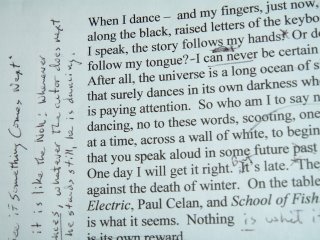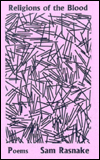there is another door...

Even in Quiet Places
(Confluence Press, 1996) 
My Name Is William Tell
(Confluence Press, 1992)
Smoke’s Way
(Graywolf Press, 1983)
*
Here’s a trilogy of books by William Stafford that have been, for me, a major influence and constant source – Smoke’s Way (1983), My Name Is William Tell (1992), and Even in Quiet Places (1996). The three books collect many of Stafford’s chapbooks published by small presses – Smoke’s Way … fourteen; My Name Is William Tell … six; Even in Quiet Places … four. Over the years I have become drawn to the chapbook format because of the directness and intimacy of the works I find there.
A number of these poems, especially some included in Quiet Places, are among Stafford’s best works. That, however, is not what draws me to the three collections. I’m more focused on the intricate connections the works have with life and the writer’s craft. It’s a more limiting view, but bursting with detail. The small pieces can have, in the force and accumulation of their gentle wills, an enormous impact on the reader.
The small, limited editions of poetry create a marvelous poetic landscape. I find this to be true among most writers.
A poem from Smoke’s Way:
Kinship
In a wilderness at the end of a vine
it is now. Flowers are brushing toward noon.
From the dome of his skull in a room in
the earth, under the arch of the sky,
a caveman draws curves to link
hunter and prey. In that harness he put
on them all, the animals whine.
So even today, when we start to speak, then
turn away, I hear through contorted rock
a diagram rise through quiet—
that artist at work in the cave and a
tunneling heart—yours, mine—lost as
it ever was, racing to stay the same.
*
This poem with such a direct opening message … it is now … illustrates the immense force of a history I rarely consider. Stafford connects then and now in such a marvelous way that, to be honest, forces me to consider the nature of loneliness, not only as a part of the human condition but as a bedrock in my own life. Here I’m thinking of the words from Bashō: Even in Kyoto I long for Kyoto. Although the writer most probably is a social creature by design, his or her world is, ultimately, a lonely one. The craft itself forces the issue.
I make the connection of the “tunneling heart” with the writer’s need to create. I also realize that the image must surely have a more universal necessity to it. Stafford writes, “yours, mine”. We race to stay the same. The more we move, the more we are still. The more we lose, the more we find. That is life – whether it is underground, creating some sort of beauty and order in the numbing cold and solitary places of the world … or at a desk typing words onto a computer screen, just before leaving for a dentist’s appointment, then the grocery store.









2 comments:
Great post. I love chapbooks -- a collection of poems centered around one topic -- typically holds my interest more than a poetry book with several-themed poems.
I enjoyed the poem, "Kinship." For some reason, the hunter and the prey reference, along with the title made me think: survival of the fittest in the wild.
Talk about kinship. In this post I can here the silence and, just after, the clock ticking on your wall.
Post a Comment